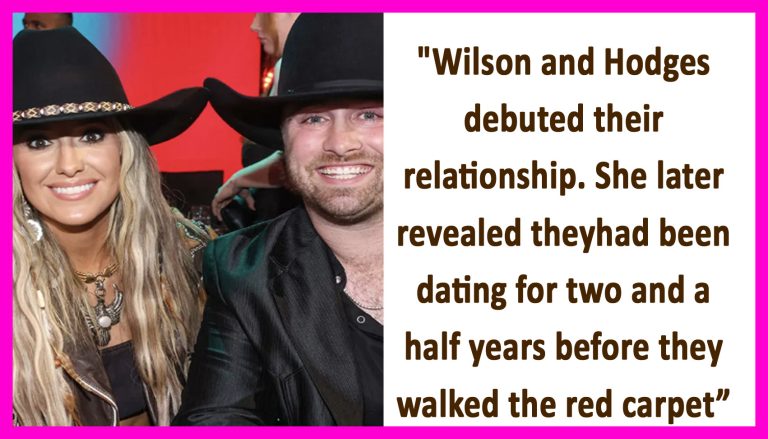The Science Behind a Romantic Hug: What Happens to Your Brain and Heart
In the tapestry of human connection, a romantic hug stands as one of the most powerful and intimate gestures. It’s simple in form—two bodies embracing, often in silence—but it carries a profound emotional weight. Far from being just a cultural or social habit, science reveals that a romantic hug triggers a cascade of physiological and psychological responses, particularly in the brain and heart. This article explores what really happens inside us during that tender moment of closeness.
1. The Origins of Touch: A Primal Language
Long before humans developed complex languages, touch served as the primary means of connection. Anthropologists and neuroscientists alike affirm that physical touch is one of the most fundamental and ancient forms of communication, dating back to our evolutionary ancestors.
A romantic hug, which often involves full-body contact, sustained pressure, and synchronization of breathing, taps directly into our primal brain structures. This physical intimacy sends signals to the brain, indicating safety, trust, and bonding—a sensory language rooted in our survival instincts.
2. The Neuroscience of a Hug
a. The Role of the Somatosensory Cortex
When two people engage in a hug, their skin receptors (known as mechanoreceptors) transmit signals to the brain’s somatosensory cortex. This region is responsible for processing touch, pressure, temperature, and proprioception (the sense of body position). A romantic hug activates more than just tactile sensation—it brings awareness to the entire body and heightens emotional perception.
b. Oxytocin: The Love Hormone
One of the most notable neurochemical effects of a romantic hug is the release of oxytocin. Sometimes called the “cuddle hormone,” oxytocin plays a critical role in forming bonds between romantic partners. Produced in the hypothalamus and released by the pituitary gland, oxytocin increases trust, empathy, and emotional closeness.
In romantic relationships, this hormone is instrumental in deepening intimacy. Just 20 seconds of hugging can cause oxytocin levels to spike significantly, helping partners feel emotionally synced and secure.
c. Dopamine and Reward
A romantic hug also activates the dopaminergic reward system, particularly in regions like the ventral tegmental area (VTA) and the nucleus accumbens. Dopamine, often associated with pleasure and motivation, floods the brain during romantic touch. This surge reinforces the desire to be close to one’s partner, effectively making hugs “addictive” in a healthy, emotional sense.
d. Serotonin and Mood Stabilization
Romantic hugs increase serotonin levels, which play a crucial role in mood regulation. Elevated serotonin reduces feelings of anxiety, depression, and irritability. It fosters emotional stability, which is especially important in maintaining long-term romantic relationships.
3. The Heart’s Response: Synchrony and Calm
a. Heart Rate Synchronization
One of the most remarkable physiological phenomena during a romantic hug is heart rate synchronization. Studies using electrocardiograms (ECGs) and heart rate monitors have shown that couples who hug for 20 seconds or more often experience aligned heartbeats and breathing patterns. This phenomenon is a sign of interpersonal biofeedback, where two nervous systems attune to each other in real-time.
This synchronization is thought to enhance feelings of unity, safety, and mutual understanding. It’s one reason why a warm embrace after a fight or during a stressful time can feel almost magically healing.
b. Reduced Blood Pressure and Cortisol
Hugging also has measurable effects on the cardiovascular system. Researchers at the University of North Carolina found that individuals who hugged their partners regularly had lower blood pressure and reduced cortisol levels. Cortisol, known as the “stress hormone,” can increase heart rate and blood pressure when elevated.
In contrast, a romantic hug activates the parasympathetic nervous system, often referred to as the “rest-and-digest” system. This results in decreased heart rate, reduced muscle tension, and a sense of calm—beneficial for both mental and physical health.
4. Emotional and Psychological Benefits
a. Reinforcement of Emotional Bonds
A hug acts as a powerful form of non-verbal communication, expressing love, comfort, and commitment. When shared romantically, it becomes a ritual of affirmation. Over time, these small but consistent acts of affection build a strong emotional foundation in the relationship.
b. Emotional Regulation and Security
In moments of emotional upheaval—such as after an argument, during grief, or amid anxiety—a hug from a romantic partner can act as an emotional reset. It allows the brain to move from a reactive state (often dominated by the amygdala) to a more regulated and reflective state (mediated by the prefrontal cortex).
This physical touch tells the brain, “You’re not alone. You’re loved. It’s okay.”
c. Deeper Communication Without Words
A romantic hug can also communicate messages that words often fail to express: empathy, forgiveness, longing, or just a deep sense of presence. In this way, it becomes a tactile language for emotional intimacy.
5. The Impact of Duration and Intensity
Not all hugs are created equal. Science suggests that the duration and intention behind the hug dramatically influence its effects.
- Short hugs (5–10 seconds): Offer basic comfort but may not trigger significant oxytocin release.
- Medium hugs (10–20 seconds): Begin to activate parasympathetic nervous system responses and moderate oxytocin production.
- Long hugs (20+ seconds): Trigger full-spectrum neurochemical changes including increased oxytocin, serotonin, and dopamine, while also significantly decreasing cortisol.
Intensity matters too. A limp or distracted hug may not provide the same emotional benefits as one that is firm, still, and emotionally present.
6. Gender Differences in Hug Perception
Research shows that men and women may experience romantic hugs differently on both emotional and physiological levels.
- Men often show greater spikes in dopamine during romantic hugs, which may link to their more reward-driven processing of touch.
- Women generally experience higher increases in oxytocin and report greater emotional bonding during the same interaction.
These differences don’t indicate a disparity in depth of feeling, but rather reflect neurobiological diversity in how intimacy is processed.
7. Cultural Influences and Learned Behavior
While the biological basis of touch is universal, cultural norms shape how romantic hugs are initiated and received. In some societies, public displays of affection are encouraged and frequent; in others, they are frowned upon or even taboo.
Yet even in cultures where hugging is less common, the neurochemical responses remain similar when romantic touch does occur—highlighting the biological universality of the practice.
8. Romantic Hugs Across Relationship Stages
a. Early-Stage Romance
In the early stages of love, romantic hugs are often electric. The brain is flooded with phenylethylamine (PEA), a chemical that induces feelings of euphoria and excitement. Combined with oxytocin and dopamine, this cocktail creates the “honeymoon phase” of attachment.
b. Long-Term Relationships
In established relationships, hugs become a form of emotional maintenance. While the thrill might be subtler, the calming, grounding effects become even more important for sustaining emotional intimacy and managing life stress.
c. Reconciliation and Repair
Post-conflict hugs serve a reparative function, helping to restore trust and emotional balance. They act as a physiological bridge from discord to harmony.
9. The Absence of Touch: Psychological Consequences
Just as hugs can heal, the lack of physical affection in a romantic relationship can be detrimental. Touch deprivation has been linked to:
- Increased anxiety and depression
- Higher stress hormone levels
- Poor immune function
- Reduced relationship satisfaction
Couples who avoid or neglect physical touch often report feeling emotionally distant, even when communication is otherwise good.
10. How to Hug Better: Science-Backed Tips
If you want to maximize the benefits of romantic hugs, consider these evidence-based practices:
- Be Present: Turn off distractions and be emotionally available.
- Hold for 20 Seconds: This is the sweet spot for oxytocin release.
- Synchronize Breathing: Try to match your breathing with your partner’s for deeper connection.
- Use Full Contact: Let your bodies align fully to engage the parasympathetic system.
- Hug Often: Daily affection creates lasting emotional and physiological benefits.
Conclusion: A Hug Is More Than a Gesture
A romantic hug is not just a sweet moment shared between partners—it’s a multi-sensory, neurochemical event that affects the body and mind in profound ways. It reduces stress, stabilizes mood, synchronizes biological rhythms, and strengthens emotional bonds.
In a world of constant digital interaction and emotional noise, the humble hug remains a powerful anchor of love, safety, and human connection. So next time you embrace someone you love, remember: you’re not just holding them—you’re healing them, and yourself, in the most beautiful, biological way possible.


























